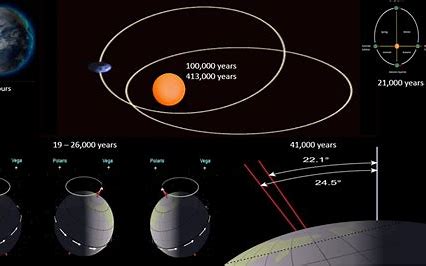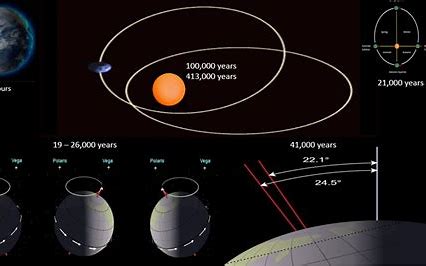
In a groundbreaking study, scientists have uncovered the intricate workings of Milankovitch cycles and their role in predicting the next ice age. Named after the Serbian geophysicist Milutin Milankovitch, these cycles describe the collective effects of changes in Earth’s movements on its climate over thousands of years. The study, led by researchers from Cardiff University,
UC Santa Barbara, Alfred Wegener Institute, and University College London have provided new insights into the timing and mechanisms behind these cycles.
The Milankovitch Cycles
Milankovitch cycles are driven by three primary factors: eccentricity, obliquity, and precession. Eccentricity refers to the shape of Earth’s orbit around the sun, which varies from nearly circular to slightly elliptical over about 100,000 years. Obliquity is the angle of Earth’s axial tilt, which changes between 22.1 and 24.5 degrees approximately every 40,000 years. Precession is the wobble of Earth’s rotational axis, which completes an entire cycle every 21,000 years.
These cycles influence the amount and distribution of solar radiation reaching Earth’s surface, leading to long-term climate changes. For instance, when Earth’s orbit is more elliptical, there is a more significant variation in the distance between Earth and the sun, affecting the intensity of seasons. Similarly, changes in axial tilt can make seasons more extreme, while precession alters the timing of seasons relative to Earth’s position in its orbit.
Predicting the Next Ice Age
The study’s findings reveal a predictable pattern in Earth’s climate history, allowing scientists to forecast future climate changes accurately. By analyzing ancient climate records preserved in ocean sediments, the researchers identified how the three orbital cycles control the timing of Earth’s ice ages. They found that, without human influence, Earth would begin cooling toward another ice age in about 10,000 years.
However, the study also highlights the significant impact of human activities on Earth’s climate. The researchers noted that human emissions of greenhouse gases have already diverted the climate from its natural course, making it unlikely that the next ice age will occur as predicted. This underscores the importance of understanding and mitigating human-induced climate change to preserve Earth’s natural climate cycles.
Conclusion
The study’s findings provide valuable insights into the mechanisms behind Milankovitch cycles and their role in shaping Earth’s climate. By uncovering the predictable patterns in these cycles, scientists can better understand the long-term impacts of both natural and human-induced climate changes. As we continue to grapple with the challenges of climate change, this research serves as a reminder of the delicate balance between Earth’s natural processes and human activities.




